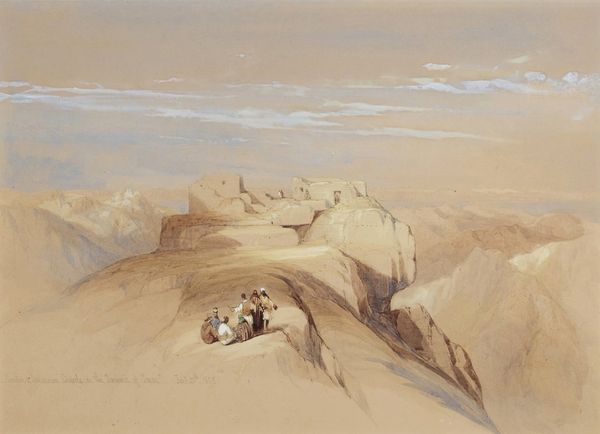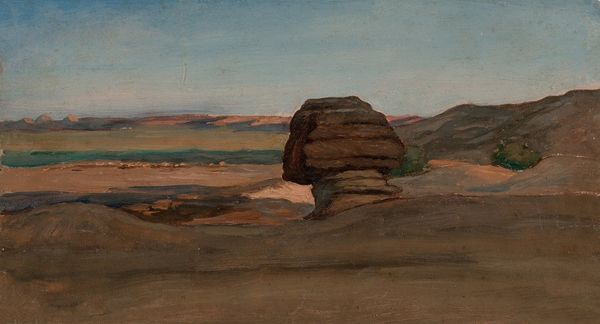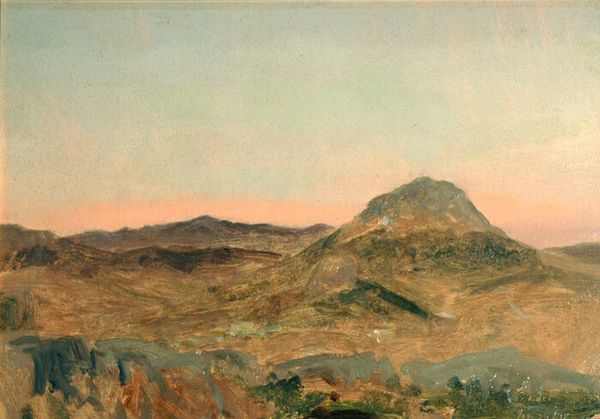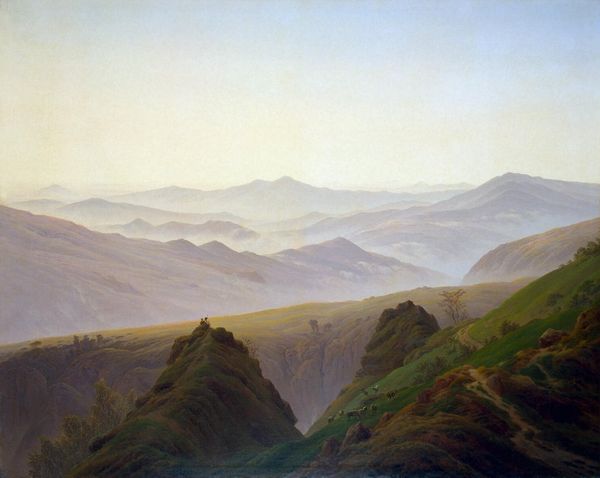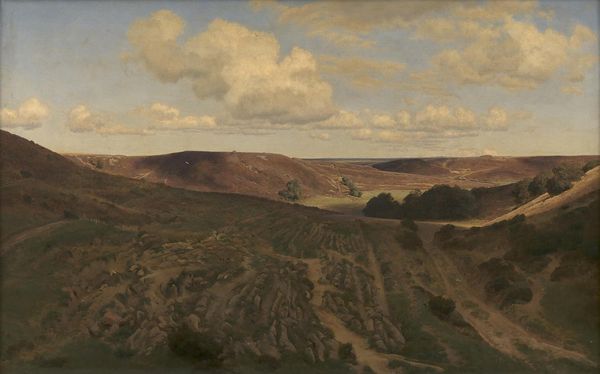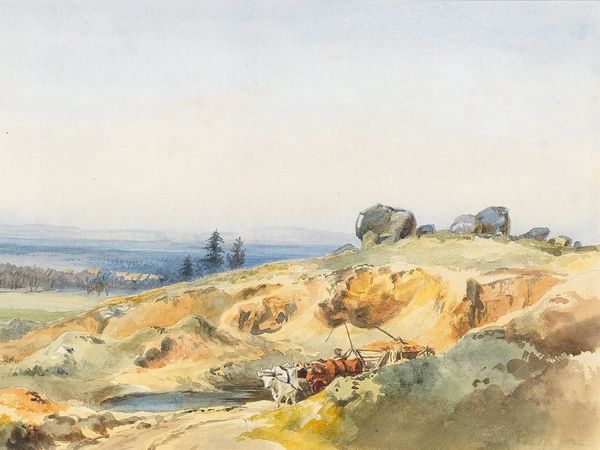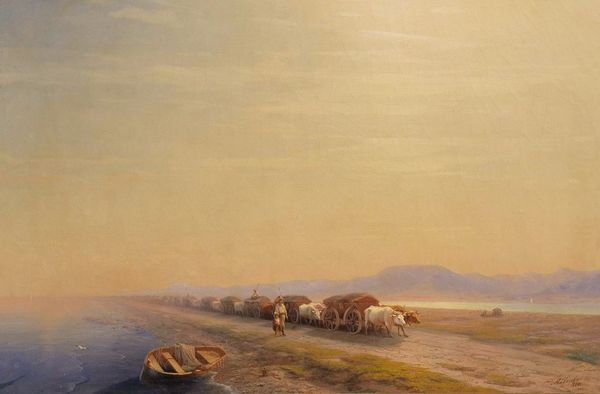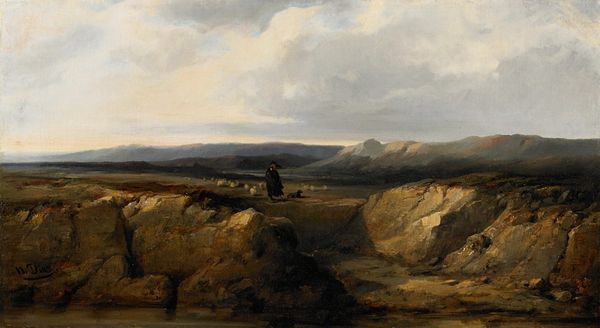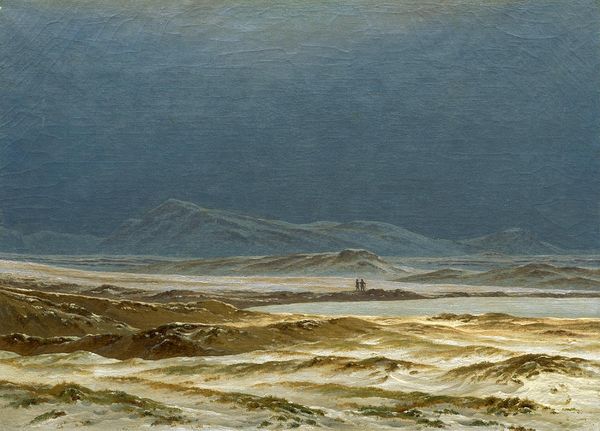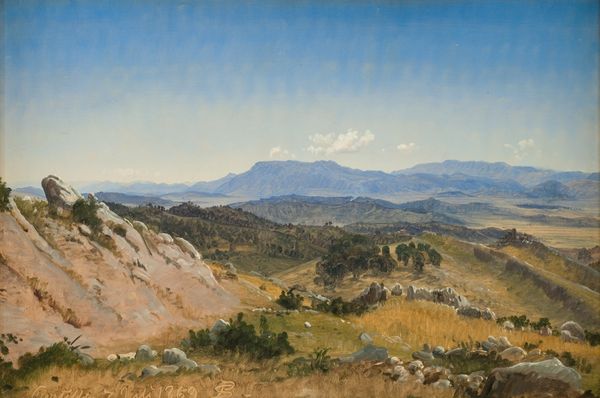
oil-paint
#
oil-paint
#
landscape
#
oil painting
#
orientalism
#
academic-art
#
realism
Copyright: Public domain
Curator: This is Jean-François Portaels’s “Landscape in Egypt," rendered in oil paint. Its precise date is not known, but it remains in a private collection. What are your initial thoughts? Editor: It’s immediately evocative of a distant, almost dreamlike locale. The colour palette, largely earthy browns and muted blues, really gives that hazy, far-away feel. The brushstrokes appear quite loose, almost unfinished. Curator: Portaels, active in the 19th century, belonged to the Orientalist movement, and the creation and reception of these landscapes became ways for Europeans to frame their ideas, stereotypes even, about the East, so its important to consider the power dynamics at play here. This work really illustrates the demand in Europe for images and representations of exotic lands during that period, and his training in academic art surely influenced his style here. Editor: Indeed, considering the lens of Orientalism is key. I'm struck by how the materiality contributes to that portrayal. Notice how the oil paint itself is layered and blended, creating a smooth, almost hazy surface? It softens the scene, and removes the viewer slightly from the place it represents. Even the act of applying oil to canvas to depict this “foreign” land becomes part of that construction of difference, reifying ideas through materials. Curator: Absolutely. Museums and galleries across Europe readily displayed this kind of work. It fed a cultural appetite, one carefully cultivated and perpetuated by institutions invested in the politics of empire. Works like this served as visual validation of Western dominance. The fact it resides now in a private collection speaks to an ongoing, and perhaps altered, relationship to such works today. Editor: The small scale further enhances its commodification; it becomes a transportable, saleable version of ‘Egypt’ for the European market. Was this intended as a study, or a finished piece, do you think? I wonder if this was exhibited, how the context might affect audience interpretation. Curator: Good question. Further research into its provenance and exhibition history might shed light on those contextual aspects and give more insight into audience reception at the time. It certainly encourages contemplation about its social role in both its time and ours. Editor: Right, examining not only the what, but the how and why of its making. Thanks. Curator: Thank you, that perspective makes it hard to see the landscape quite the same way again.
Comments
No comments
Be the first to comment and join the conversation on the ultimate creative platform.

